
[아츠앤컬쳐] 크렘스의 맞은편으로 숲과 포도밭 언덕에서 바하우를 내려다보는 위치에 이른바 “오스트리아 몬테카시노”라고 불리는 괴트바이크수도원(1083년 9월 9일 설립)이 있다.

1094년에 파사우의 울리히 주교는 교황 우르바노 2세의 승인을 받아 성 베네딕트 규칙을 도입하여 1114년에 수도원학교와 도서관을 조직했다. 이곳에 오스트리아에서 가장 큰 차임벨이 있으며 매년 황실 특별전시회에 미술품을 전시한다. 남쪽으로 높이 유명한 국제적으로 유명한 바하우 살구과수원이 있다. 이 달콤한 살구, 잼 또는 브랜디를 강력히 추천한다.
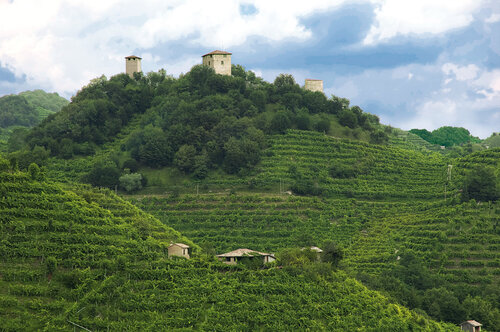
강을 따라 내려가면 유명한 화이트와인 지역인 캄프탈, 바그람, 트라이젠탈이 비엔나의 북쪽 칼렌버그산 끝까지 펼쳐진다. 이곳의 특산품은 맛이 풍부하고 밸런스가 좋으며 드라이한 그뤼너 벨트리너 화이트와인으로, 빈티지 특유의 짙은 농도에 끝맛이 우수하여 국제와인대회에서 항상 상위권이다. 도나우강 북쪽의 와인 재배 지역은 ‘슈타인페더’를 시작으로 ‘페더슈필’을 지나 정상 ‘스마라크트’까지 3단계 표준 품질 수준의 화이트와인을 만들었다.
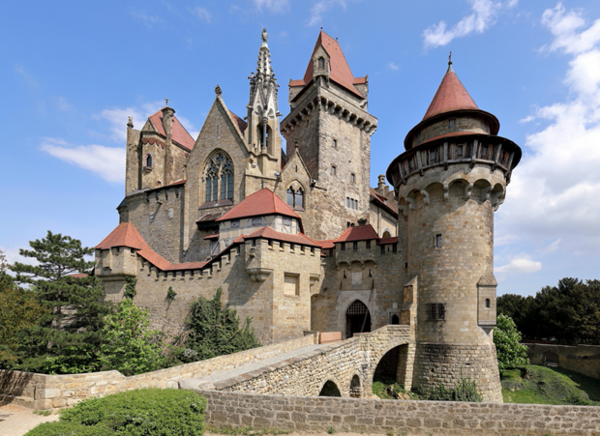
비엔나로 내려가는 길에 몇몇 유적과 작은 성들이 있고, 툴른 시장을 지나 도나우강 왼쪽으로 큰 크로이젠슈타인성이 있다. 비엔나 근교에서 가장 아름다우며 인기있는 유명 관광명소인 크로이젠슈타인성은 1115년의 문서에 ‘그리자네스슈타인’으로 처음 언급되었고, 1620년 카를 백작 생틸레르에게 임대되었다. 1645년 4월, 30년 전쟁 중에 야전사령관 토르스텐손의 스웨덴 군대에 의해 점령되고 바로 제국군의 포위 공격으로 쫓겨나면서 성이 파괴되었다.
이후 1874~1907년에 네포무크 윌체크 백작이 로마네스크 고딕 양식으로 현재의 성을 건설했다. 1945년에 다시 심한 손상을 입었으나 완전히 복구되어, 현재 박물관이 되었고 독수리 쇼가 펼쳐진다. 제2차세계대전 이후 성은 중세 블록버스터 영화의 완벽한 배경이 되었고 멋진 전망을 선사한다.

다음 목적지는 1860년부터 국제적으로 인정받는 와인제조자를 위한 포도 및 과수재배 연방학교를 운영하는 클로스터노이부르크수도원이다. 수도원은 전망과 재정적으로 이 지역을 이끌며, 비엔나 초입 지점에 있다. 칼렌버그 옆 레오폴즈버그산 뒤에 원래 로마의 아스투리스 요새의 자리이다. 이후, 1100년경에 바벤버그 후작 레오폴드 3세가 노이부르크 정착촌 두 곳을 레오폴즈버그성과 아우구스티누스수도원 주변에 세웠다. 수도원 구역은 1218년 홍수로 시장 구역에서 분리되어 1298년에 클로스터노이부르크가 되었다.
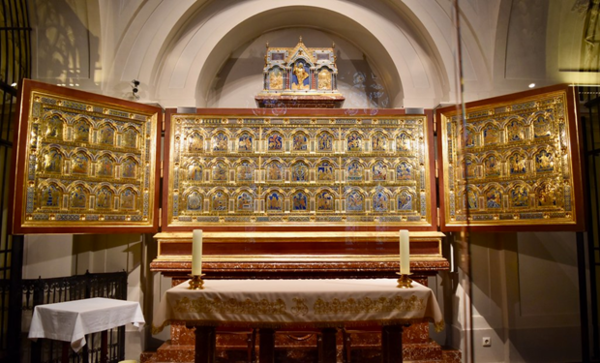
코르헤렌슈티프트는 오스트리아에서 가장 오래되고 부유한 곳 중 하나로, 귀중한 박물관과 도서관이 있다. 수도원 교회(1114~36)에는 베르됭의 니콜라스가 만든 유명한 금과 에나멜제단(1181)이 있다.
조금 더 가면 클로스터노이부르크이며 도나우 강 우편의 레오폴즈버그산은 알프스산맥의 출발점으로 작은 와인마을 칼렌버거도르프에서 시작한다. 이곳의 아름다운 오솔길을 따라 포도밭을 지나면 레오폴즈버그산과 칼렌버그산으로 갈 수 있다. 베토벤은 비엔나 경계에 있는 이 지역을 찾아 와인을 즐기면서 유명한 곡들을 작곡했는데, 그가 걷던 길을 베토벤 베그라고 한다.
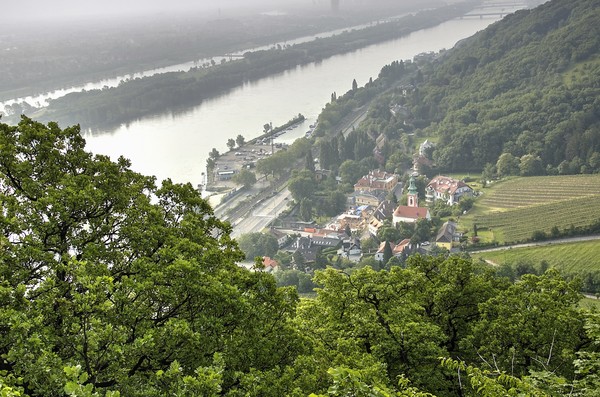
Die Donau Part 2 from Krems to Vienna
On the exit of the Wachau in opposite of the city of Krems is another large monastery can be seen Stift Göttweig (Abbey of Goettweig) founded in 1083 (the original foundation charter, dated with 9 September 1083, is still preserved in the abbey archives) is a treasure overlooking the Wachau from a hill covered by vineyards and forests. Often called the “Austrian Montecassino”.

By 1094 Bishop Ulrich of Passau, with the permission of Pope Urban II, introduced the Rule of St. Benedict which is practiced until now. In 1114 it became a monastic school and the library was organized. The archives houses visual art and a comprehensive music collection. The abbey shows its art collections during special annual exhibitions shown in the royal and imperial rooms. The church houses the largest chimes of any church in Austria. To the south the highest elevated orchard of the famous Wachau apricot can be found. The Apricot of Wachau is an international heritage, please try the sweet apricot, jam, or brandy (very strong recommended).

On the way down the river you are passing famous white wine areas the Kamptal, Wagram, Traisental ending at the northern Mountain of Vienna the Kahlenberg. The speciality of this area is Grüner Veltliner dry rich in taste, well-balanced, with the concentration typical of the vintage, the reserve is extremely concentrated and long in the finish white wine, an excellent wine. The wine growing area around the northern part of the Danube have created 3 standard quality levels of white wine starting with “Steinfeder” over “Federspiel” up to the top “Smaragd”.
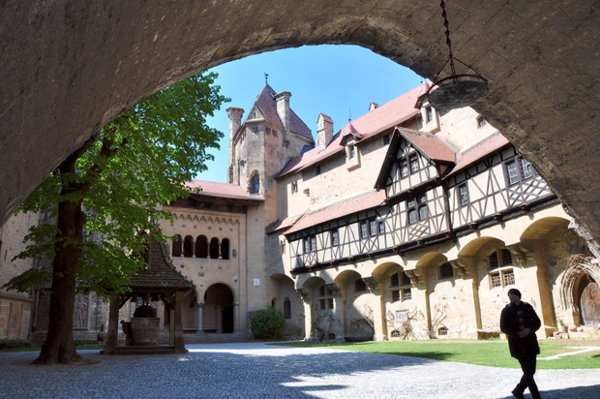
On the way down to Vienna several ruins and small, still operating castles can be found. Passing the Market place of Tulln, on the left side of the Donau (Danube) one of the largest fortress (Castle) of Kreuzenstein. Its unique collection make a visit to the world of the Middle Ages an exciting first-hand experience.
The next stop is the Abby of Klosterneuburg meanwhile an international recognised education centre for wine makers, the Federal College of Viticulture and Pomology since 1860. The Chorherrenstift Klosterneuburg (Abbey of Klosterneuburg) is the entrance point to Vienna. A settlement called Neuburg developed around a castle on the Leopoldsberg and an Augustinian abbey, both of which were founded in about 1100 by the Babenberg margrave Leopold III of Austria. The abbey section was designated Klosterneuburg after 1218, when it was separated from the market district (Korneuburg) by flooding, chartered in 1298.
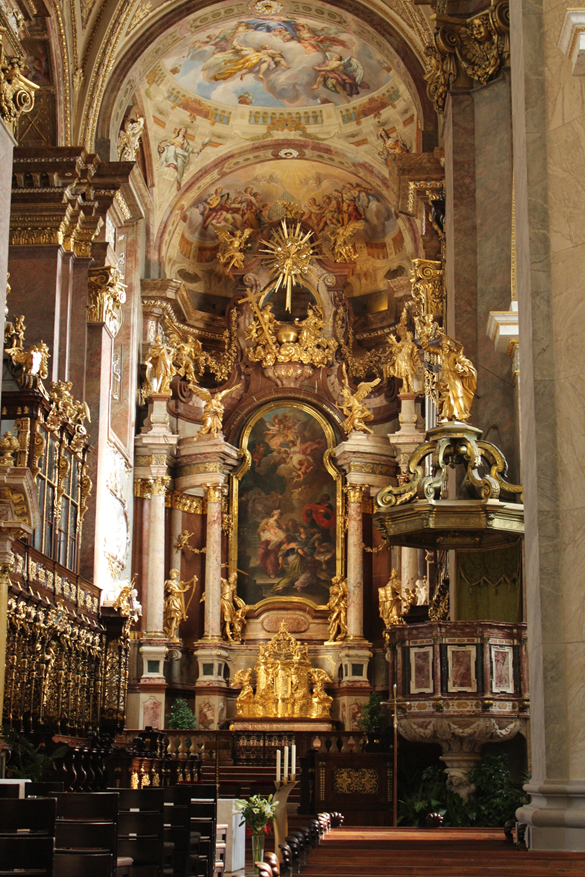
Up to now, the Chorherrenstift (Abbey) is one of the oldest and richest in Austria, it has an important museum and a valuable library. The abbey church (1114–36) contains a famous wroughtgold and enamel altar (1181) by Nicholas of Verdun.
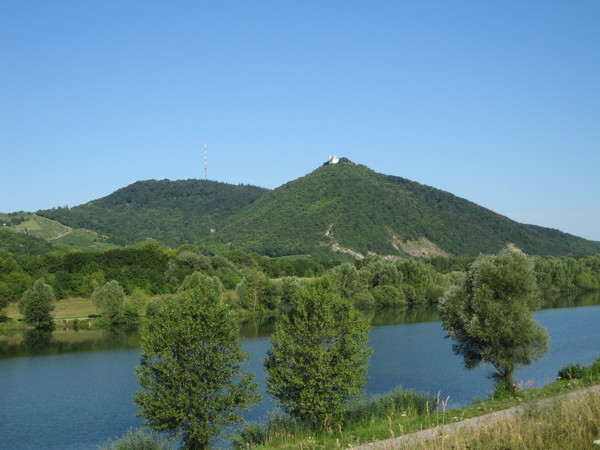
Closed to Klosterneuburg few Kilometres further, at the mountain Leopoldsberg, right to the Donau, the starting point of the Alps is located. The mountain itself can be claimed by starting in the small wine makers village named Kahlenbergerdorf. From there on a beautiful narrow path throw the Vienna vineyards is allowing you to go up to the mountain Leoboldsberg and further to the Kahlenberg. Already Ludwig van Beethoven discovered and loved this area on the boarder of Vienna. He composed several famous music pieces by enjoying the wine surrounded of the Village, now this path is called Beethoven Weg.
글 | 볼프강 슬라빈스키 Wolfgang Slawinski
서울명예시민, 한·오스트리아협회 부회장

